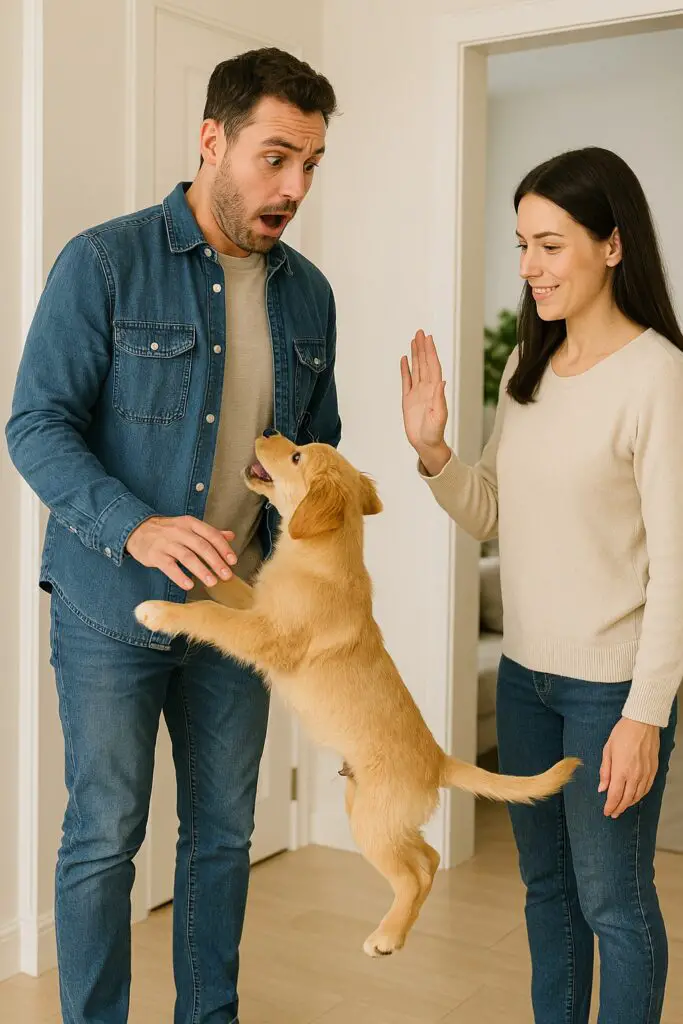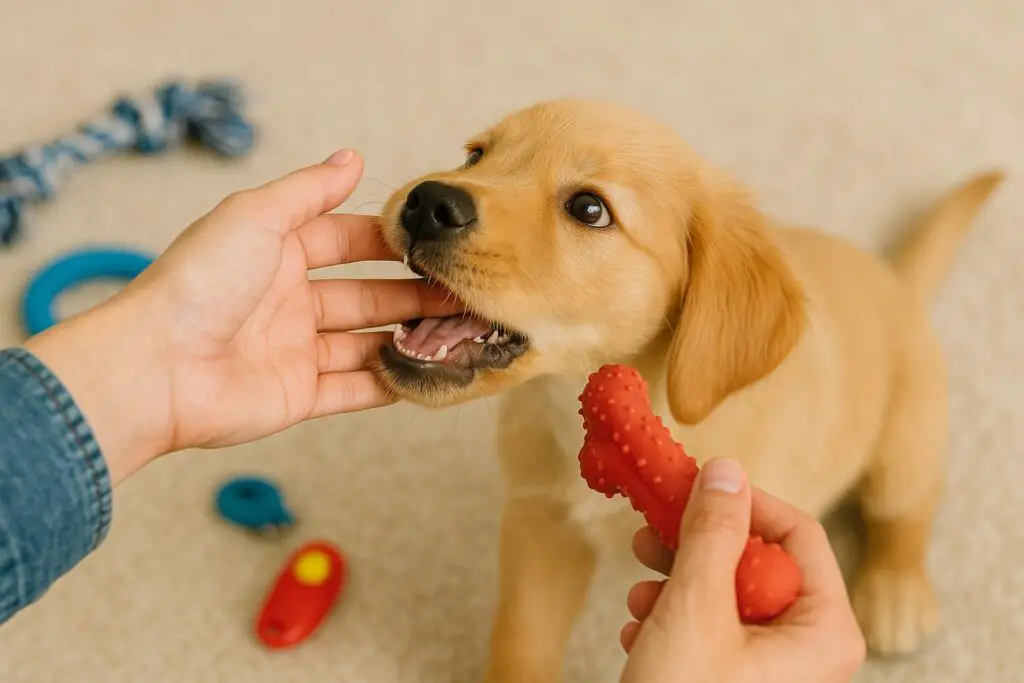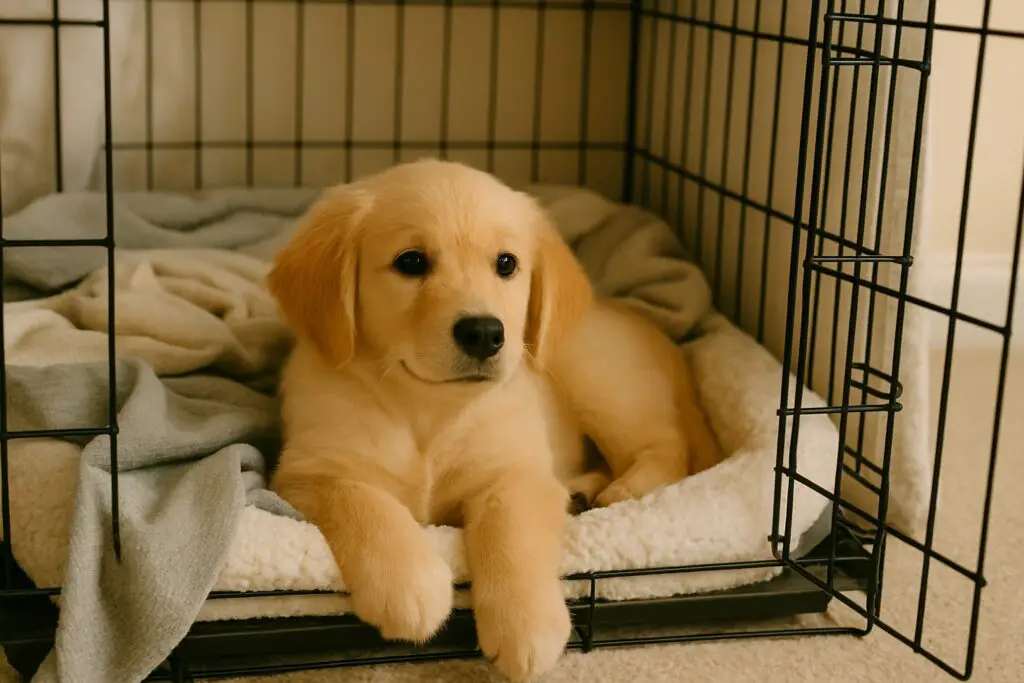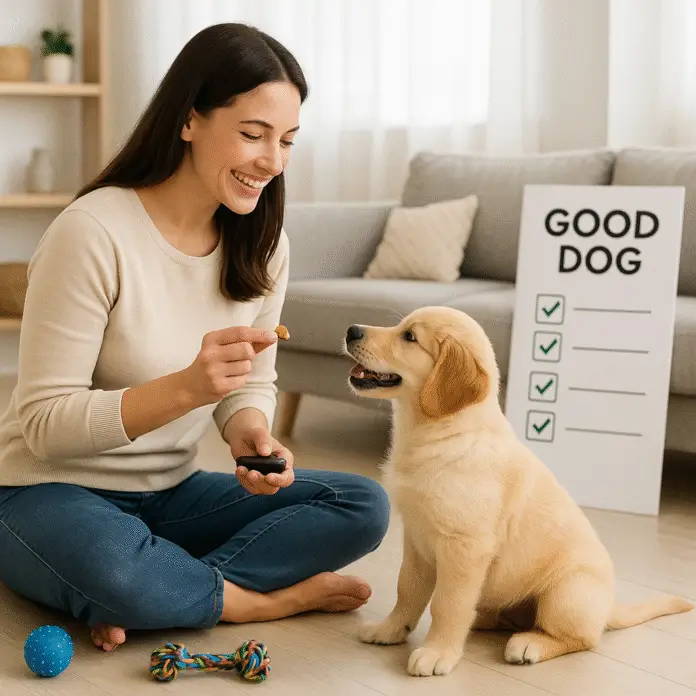🐾 Puppy Problems Driving You Crazy? You’re not alone! From enthusiastic jumps that knock you off your feet to those sharp little teeth nipping at your ankles, raising a puppy can feel like a whirlwind of chaos. But don’t worry, there’s hope on the horizon!
Imagine a world where your furry friend greets you calmly, plays gently, and behaves like the perfect canine companion you’ve always dreamed of. It’s not just a fantasy – with the right techniques and a little patience, you can transform those troublesome puppy behaviors into distant memories. Ready to turn your home from a puppy playground into a peaceful paradise?
In this blog post, we’ll dive into the most common puppy problems and provide you with fast, effective solutions. From understanding why your pup acts out to establishing consistent training methods, we’ll cover everything you need to know. Get ready to tackle excessive jumping, curb nipping habits, and address other puppy issues head-on. Let’s embark on this journey to puppy perfection together! 🐶💖
Understanding Common Puppy Behaviors
Decoding jumping and nipping instincts
Puppies are bundles of energy and curiosity, often expressing their excitement through jumping and nipping. These behaviors are rooted in their natural instincts:
- Jumping: A way to seek attention and greet others face-to-face
- Nipping: Explores the world and plays with littermates
Understanding these instincts helps owners address them effectively:
BehaviorInstinctPurposeJumpingSocial interactionGreet at eye levelNippingExploration and playLearn about surroundings

Recognizing normal vs. problematic behaviors
While jumping and nipping are normal puppy behaviors, they can become problematic if left unchecked. Here’s how to differentiate:
Normal:
- Occasional jumping when excited
- Gentle mouthing during play
Problematic:
- Aggressive jumping on all visitors
- Hard biting that breaks skin
Age-appropriate expectations for puppies
It’s crucial to set realistic expectations based on your puppy’s age:
- 8-12 weeks: Focus on socialization and basic commands
- 3-6 months: Introduce more structured training
- 6-12 months: Reinforce good behaviors and address any lingering issues
Remember, puppies develop at different rates. Patience and consistency are key in shaping their behavior. As we move forward, we’ll explore specific techniques to tackle excessive jumping and curb nipping habits effectively.
Tackling Excessive Jumping
A. Identifying triggers for jumping behavior
To effectively tackle excessive jumping in puppies, it’s crucial to identify the triggers that prompt this behavior. Common triggers include:
- Excitement upon your return home
- Greeting visitors
- Anticipation of food or treats
- Desire for attention or play
Understanding these triggers allows for targeted training strategies. Here’s a table summarizing common triggers and their underlying motivations:
TriggerUnderlying MotivationOwner’s returnExcitement, seeking attentionVisitors arrivingCuriosity, social interactionMealtimeAnticipation of foodPlay initiationDesire for engagement
B. Teaching the “four on the floor” rule
The “four on the floor” rule is an effective technique to discourage jumping. Here’s how to implement it:
- Ignore jumping behavior completely
- Only give attention when all four paws are on the ground
- Reward calm behavior with treats or praise
- Consistently enforce the rule with all family members and visitors
C. Redirecting excitement with toys
Redirecting your puppy’s excitement can help prevent jumping. Try these strategies:
- Keep toys near entry points
- Offer a favorite toy when greeting your puppy
- Encourage alternative behaviors like “sit” or “fetch”
D. Reinforcing calm greetings
Promoting calm greetings is essential for long-term success. Practice these techniques:
- Enter calmly, avoiding excessive excitement
- Ask visitors to ignore the puppy until calm
- Reward quiet, seated behavior during greetings
- Gradually increase exposure to new people and situations
By consistently applying these methods, you’ll be well on your way to curbing excessive jumping behavior in your puppy. Next, we’ll explore effective strategies for addressing another common puppy issue: nipping and biting habits.
Curbing Nipping and Biting Habits
Differentiating between playful nips and aggressive bites
Understanding the difference between playful nips and aggressive bites is crucial for effective puppy training. Here’s a quick comparison:
BehaviorPlayful NipsAggressive BitesIntensityGentle, controlledForceful, may break skinBody LanguageRelaxed, playful stanceTense, rigid postureGrowlingSoft, playfulDeep, threateningFrequencyOccasional during playFrequent, unprovoked

Implementing the “yelp and ignore” technique
The “yelp and ignore” technique is an effective way to discourage nipping:
- When your puppy nips, let out a high-pitched yelp
- Immediately stop playing and turn away
- Ignore the puppy for 10-20 seconds
- Resume play if the puppy calms down
- Repeat consistently to reinforce the lesson
Providing appropriate chew toys
Redirect your puppy’s biting instincts with suitable chew toys:
- Offer a variety of textures (rubber, rope, plush)
- Rotate toys to maintain interest
- Use puzzle toys to engage their mind
- Praise the puppy when they choose toys over nipping
Teaching bite inhibition through socialization
Socialization plays a crucial role in teaching bite inhibition:
- Arrange playdates with vaccinated, well-behaved dogs
- Supervise interactions closely
- Allow gentle corrections from other dogs
- Reinforce positive play behaviors
- Gradually increase exposure to different environments and stimuli
By consistently applying these techniques, you’ll help your puppy develop proper bite inhibition and foster better overall behavior.
Establishing Consistent Training Methods
Setting clear boundaries and rules
When establishing consistent training methods for your puppy, setting clear boundaries and rules is crucial. This provides a framework for your puppy to understand what behavior is acceptable and what isn’t. Here are some key points to consider:
- Establish consistent rules for all family members
- Define off-limits areas in your home
- Set clear expectations for behavior during specific activities
Using positive reinforcement techniques
Positive reinforcement is a powerful tool in puppy training. It involves rewarding desired behaviors to encourage their repetition. Here’s a comparison of different positive reinforcement techniques:
TechniqueDescriptionBest Used ForTreatsSmall, tasty rewardsInitial training, teaching new commandsPraiseVerbal encouragementReinforcing good behavior, building confidenceToysPlaytime as a rewardHigh-energy breeds, play-motivated puppiesPettingPhysical affectionCalm behaviors, bonding
Avoiding punishment-based approaches
It’s essential to focus on positive methods rather than punishment. Punishment can lead to fear and anxiety, potentially damaging your relationship with your puppy. Instead:
- Redirect unwanted behavior to appropriate activities
- Ignore minor misbehaviors to avoid reinforcing them with attention
- Use time-outs sparingly and only for brief periods
Creating a structured daily routine
A consistent daily routine helps puppies feel secure and understand what’s expected of them. This routine should include:
- Regular feeding times
- Scheduled potty breaks
- Daily exercise and playtime
- Training sessions
- Quiet time for rest and relaxation
By implementing these consistent training methods, you’ll set a strong foundation for your puppy’s behavior and create a harmonious household. Next, we’ll explore how to address other common puppy issues that may arise during the training process.
Addressing Other Common Puppy Issues
A. Solving house training challenges
House training can be one of the most frustrating aspects of raising a puppy. To tackle this issue effectively, follow these key strategies:
- Establish a consistent routine
- Use positive reinforcement
- Supervise closely
- Choose a designated potty area
MethodDescriptionBenefitCrate trainingConfine puppy when unsupervisedPrevents accidents and teaches bladder controlFrequent breaksTake puppy out every 1-2 hoursReduces chances of indoor accidentsReward systemPraise and treat for outdoor eliminationReinforces desired behavior
B. Managing separation anxiety
Separation anxiety can be distressing for both puppies and owners. Here are effective ways to address this issue:
- Gradual desensitization
- Create a safe space
- Exercise before departure
- Use calming aids
Start by leaving your puppy alone for short periods and gradually increase the duration. Provide a comfortable crate or designated area with toys and treats to keep them occupied.
C. Reducing excessive barking
Excessive barking can be a nuisance. To curb this behavior:
- Identify the trigger
- Use positive interruption
- Teach the “quiet” command
- Provide mental stimulation
When your puppy starts barking, redirect their attention to a toy or treat. Consistently reward quiet behavior to reinforce it.
D. Preventing destructive chewing
Destructive chewing is a common puppy problem. To prevent it:
- Puppy-proof your home
- Provide appropriate chew toys
- Use deterrent sprays on furniture
- Supervise and redirect
Rotate toys regularly to maintain interest and always praise your puppy for chewing on appropriate items. With patience and consistency, these common puppy issues can be effectively managed, leading to a happier household for both you and your furry friend.
Promoting Proper Socialization
Exposing puppies to various environments
Introducing your puppy to a wide range of environments is crucial for their development. Create a “socialization checklist” that includes different surfaces, sounds, and sights. Here’s a sample checklist to get you started:
Environment TypeExamplesSurfacesGrass, concrete, sand, carpetSoundsTraffic, appliances, musicSightsPeople in hats, umbrellas, bicycles
Take your puppy on short, positive outings to experience these environments. Remember to keep experiences brief and rewarding.
Encouraging positive interactions with people and animals
Facilitate controlled meet-and-greets with friendly dogs and people of various ages, sizes, and appearances. Use treats and praise to reinforce positive interactions. Always supervise these encounters to ensure safety and prevent overwhelming experiences.
Enrolling in puppy classes
Puppy classes offer structured socialization opportunities and basic training. Benefits include:
- Exposure to other puppies and people
- Professional guidance on training techniques
- Safe environment for play and learning
Research local trainers and choose a class that emphasizes positive reinforcement methods.
Building confidence through controlled experiences
Gradually expose your puppy to new situations, always ensuring they feel safe and supported. Some confidence-building activities include:
- Obstacle courses with household items
- Gentle handling exercises
- Interactive puzzle toys
- Short car rides with positive associations
Remember, socialization is an ongoing process. Consistently exposing your puppy to new experiences in a positive manner will help them grow into a well-adjusted adult dog. Next, we’ll explore how to maintain these positive behaviors for long-term success.
Maintaining Long-Term Behavioral Success
Continuing training throughout adolescence
As your puppy grows into adolescence, it’s crucial to maintain consistent training efforts. This phase can be challenging, but persistence pays off. Here’s a breakdown of key focus areas:
Focus AreaImportanceTechniquesObedienceHighRegular practice of basic commandsSocializationMediumContinued exposure to new environmentsImpulse ControlHighTeaching “leave it” and “wait” commands
Remember, adolescence is a period of testing boundaries. Stay patient and reinforce positive behaviors consistently.

Adapting techniques as your puppy grows
As your puppy matures, you’ll need to adjust your training methods. Consider these adaptations:
- Increase exercise duration to match growing energy levels
- Introduce more complex commands and tasks
- Adjust rewards to match changing motivations
Seeking professional help when needed
Don’t hesitate to consult a professional trainer if you encounter persistent issues. They can provide:
- Tailored advice for specific behavioral problems
- Advanced training techniques
- Guidance on managing adolescent challenges
Celebrating progress and milestones
Recognizing your puppy’s achievements is vital for ongoing success. Create a progress chart to track improvements and celebrate small wins. This positive reinforcement will motivate both you and your furry friend to continue working towards long-term behavioral excellence.
Raising a well-behaved puppy requires patience, consistency, and the right approach to addressing common behavioral issues. By tackling problems like excessive jumping, nipping, and biting early on, you can set your furry friend up for success. Implementing consistent training methods, promoting proper socialization, and addressing other puppy-related challenges are crucial steps in shaping your dog’s behavior for the long term.
Remember, every puppy is unique and may require different strategies to overcome specific issues. Stay committed to your training efforts, celebrate small victories, and don’t hesitate to seek professional help if needed. With time, love, and dedication, you’ll transform your energetic puppy into a well-mannered adult dog, ensuring a harmonious relationship between you and your canine companion for years to come.



